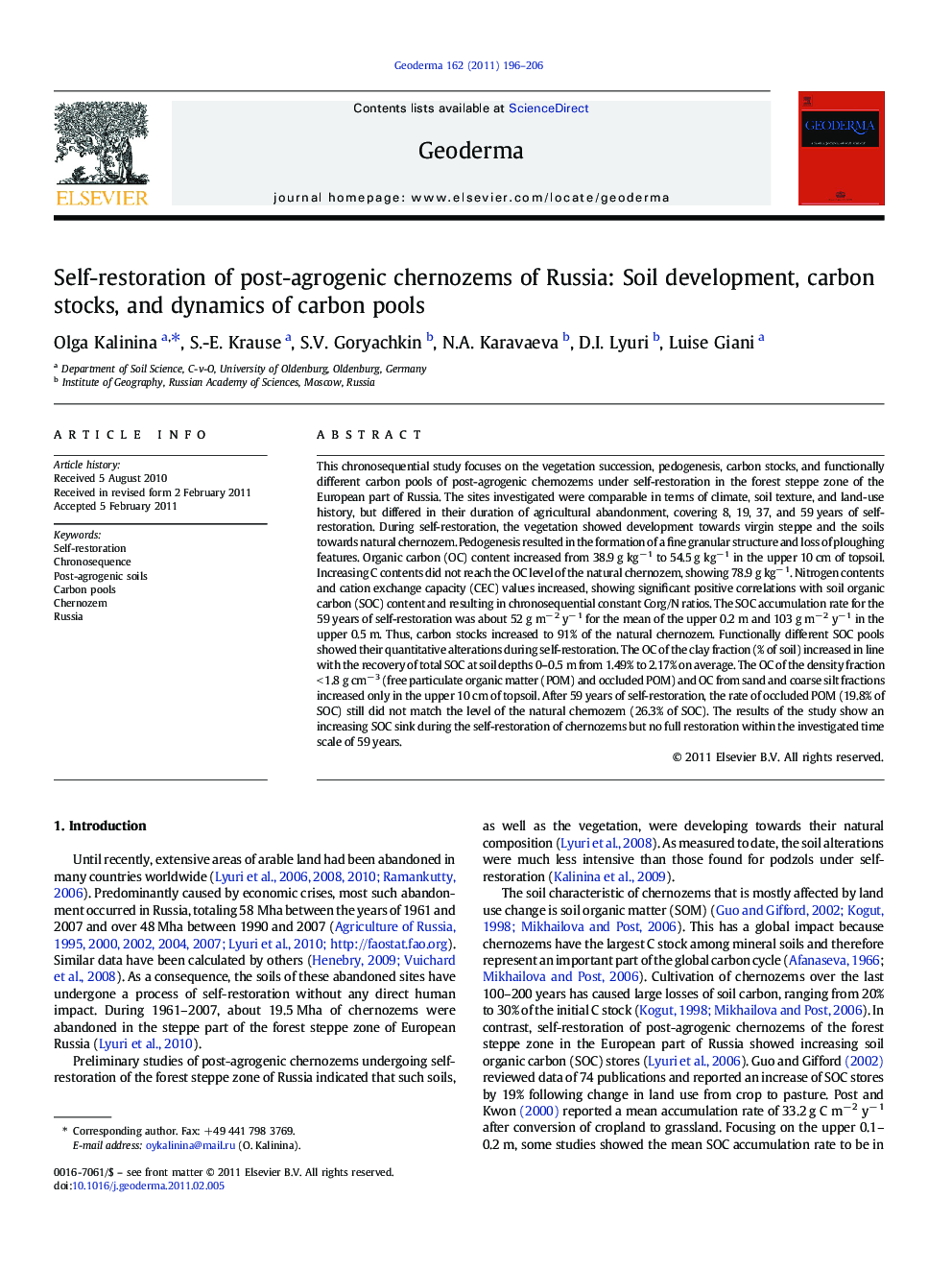| Article ID | Journal | Published Year | Pages | File Type |
|---|---|---|---|---|
| 4574125 | Geoderma | 2011 | 11 Pages |
This chronosequential study focuses on the vegetation succession, pedogenesis, carbon stocks, and functionally different carbon pools of post-agrogenic chernozems under self-restoration in the forest steppe zone of the European part of Russia. The sites investigated were comparable in terms of climate, soil texture, and land-use history, but differed in their duration of agricultural abandonment, covering 8, 19, 37, and 59 years of self-restoration. During self-restoration, the vegetation showed development towards virgin steppe and the soils towards natural chernozem. Pedogenesis resulted in the formation of a fine granular structure and loss of ploughing features. Organic carbon (OC) content increased from 38.9 g kg− 1 to 54.5 g kg− 1 in the upper 10 cm of topsoil. Increasing C contents did not reach the OC level of the natural chernozem, showing 78.9 g kg− 1. Nitrogen contents and cation exchange capacity (CEC) values increased, showing significant positive correlations with soil organic carbon (SOC) content and resulting in chronosequential constant Corg/N ratios. The SOC accumulation rate for the 59 years of self-restoration was about 52 g m− 2 y− 1 for the mean of the upper 0.2 m and 103 g m− 2 y− 1 in the upper 0.5 m. Thus, carbon stocks increased to 91% of the natural chernozem. Functionally different SOC pools showed their quantitative alterations during self-restoration. The OC of the clay fraction (% of soil) increased in line with the recovery of total SOC at soil depths 0–0.5 m from 1.49% to 2.17% on average. The OC of the density fraction < 1.8 g cm− 3 (free particulate organic matter (POM) and occluded POM) and OC from sand and coarse silt fractions increased only in the upper 10 cm of topsoil. After 59 years of self-restoration, the rate of occluded POM (19.8% of SOC) still did not match the level of the natural chernozem (26.3% of SOC). The results of the study show an increasing SOC sink during the self-restoration of chernozems but no full restoration within the investigated time scale of 59 years.
Research Highlights► The chronosequential study focuses on the self-restoration of post-agrogenic chernozems. ► The vegetation developed towards virgin steppe, the soils towards natural chernozem. ► Carbon stocks increased to 91% of the natural chernozem. ► No full restoration took place within the investigated time-scale of 59 years.
